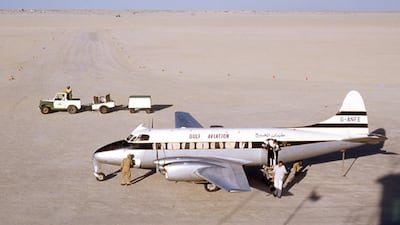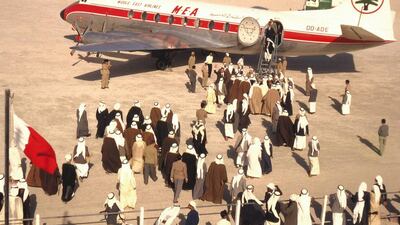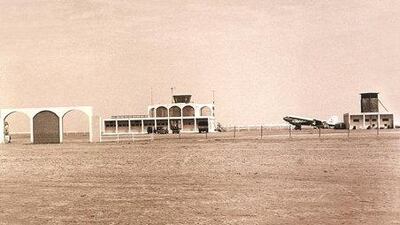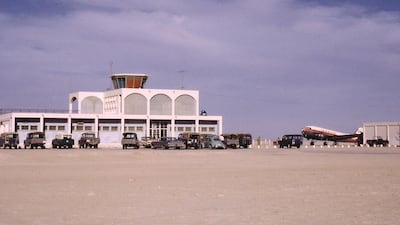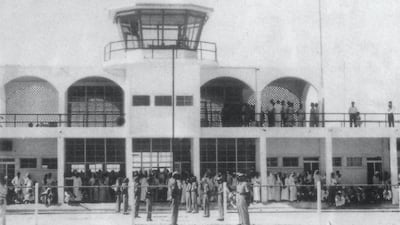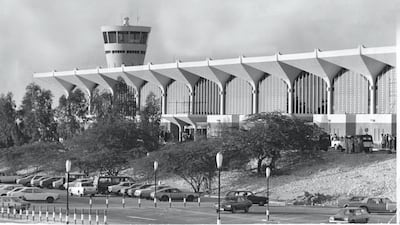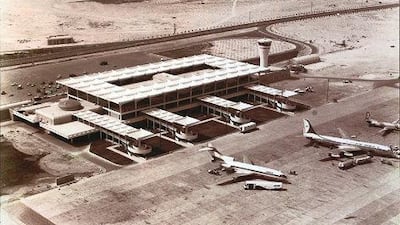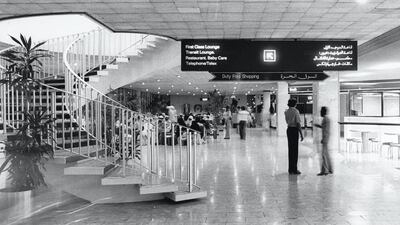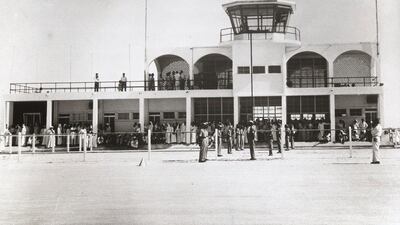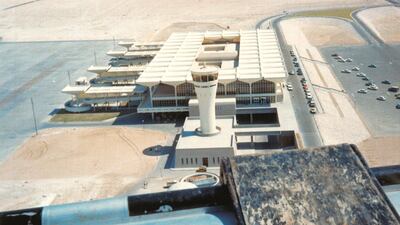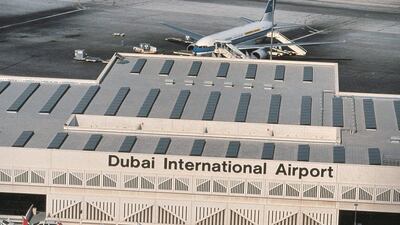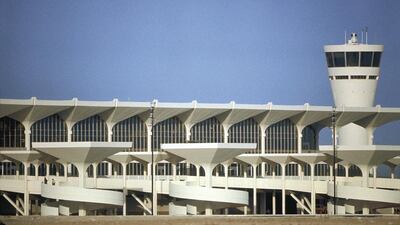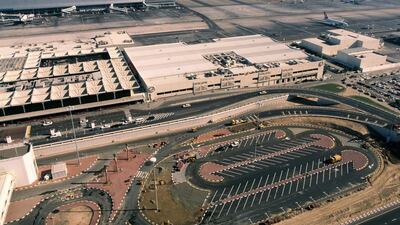It is a warm morning on the last day of September 1960 and the rear door of a Gulf Aviation de Haviland Heron opens to let out a sprinkling of weary travellers. The name of the first passenger to step foot out in to Dubai International has now been lost to history, but nearly 60 years later the airport has just welcomed its one billionth.
Back then, the population of Dubai was around 88,000. The little four engine plane that made that first landing generally carried around 14 passengers with a crew of two. Those first passengers might have been forgiven if they were confused as they stepped off the plane: in front of them was a large modern concrete terminal complete, with a fire station with a wind tower. And beyond that? Nothing as far as the eye could see but desert.
The runway was made of packed sand, as was the taxiway, identified by lights embedded in the ground. To take the passengers to Dubai, several miles away, a fleet of Land Rovers waited — it was the only vehicle rugged enough to tackle the terrain between the city and the airport.
The airport was managed by a staff of less than a dozen, mostly from Europe, but with some local hires. One of the daily tasks was to chase off wild donkeys before landings and take-offs, since the airport had no perimeter fence.

But for all its modest beginnings, Dubai Airport was part of an ambitious plan to transform the emirate and connect it to the wider world. There was, after all, nothing else like it in what was then called the Trucial States. Abu Dhabi’s airstrip was even more basic and the airport at Sharjah, which had in the 1930s been an overnight halt on the Imperial Airlines route from London to India, had by this point been leased as a base for the UK’s Royal Air Force.
Sheikh Rashid bin Saeed Al Maktoum, the then Ruler of Dubai, always had plans for expansion. In the 1930s, his father, Sheikh Saeed, had signed an open skies policy with the British allowing Karachi-bound flying boats to land in the Creek. With a proper airport, Sheikh Rashid planned to build on this.
During the early days of operations, it was unusual to see more than two aircraft on the ground at the same time. Kuwait Airways offered a Vickers Viscount that connected to jet passenger flights to Europe, while Middle East Airlines ran the occasional private charter service.
_______________
Read more:
DXB passenger numbers rise 2% in October with India top destination
Flights to be reduced during Dubai International Airport upgrade in 2019
Face-scanning tunnel expected to replace immigration officers is trialled in Dubai
_______________
By the end of 1961, 10,000 passengers and 772 scheduled flights had used the new airport. It was given the identifier code DXB because DUB had already been taken by Dublin in Ireland — X is the universally recognised place holder used to make codes up to the standard three letters.
By 1965, an asphalt runway replaced the old one of compacted sand. Further expansion, including a new terminal and improved navigation systems, allowed Dubai to welcome the new Boeing 747 and even the supersonic Concorde by the early 1970s.
But it was the 1980s that saw the airport properly adopt the model that has made it such a success. Asian airlines flying to Europe, including Cathay Pacific and Singapore Airlines, needed a refuelling stop and the Middle East, and more specifically Dubai, was the ideal destination.
In 1984, a second runway was opened, and Emirates Airlines was established and that was a real game changer. Small at first, with just four aircraft, Emirates had become one of the fastest growing airlines in the world by the early 1990s.
Dubai International Airport saw passenger numbers pass nine million a year by 1998, and by 2002, that figure had doubled. It overtook London’s Heathrow as the busiest airport in the world by international passenger numbers — although Heathrow still handles more flights — in 2014 and is currently on track to pass 90 million a year by next year.
DXB must now look well beyond that one billionth passenger if it is to keep its number one position. The airport is crucial to the economic health of the emirate — by some estimates it provides 37 per cent of Dubai’s economy and other cities are eyeing Dubai’s success hungrily.
Turkey has invested nearly Dh30 billion on a new airport for Istanbul that will eventually be the largest in the world.
But as one senior airport official described Dubai International, it is "Europe's most easterly hub and Asia's most westerly hub" meaning it is not going to give it's status as a key stopping point up easily.

